MSRP (*Base Edition)
Battery EV | Sedan | 526KM
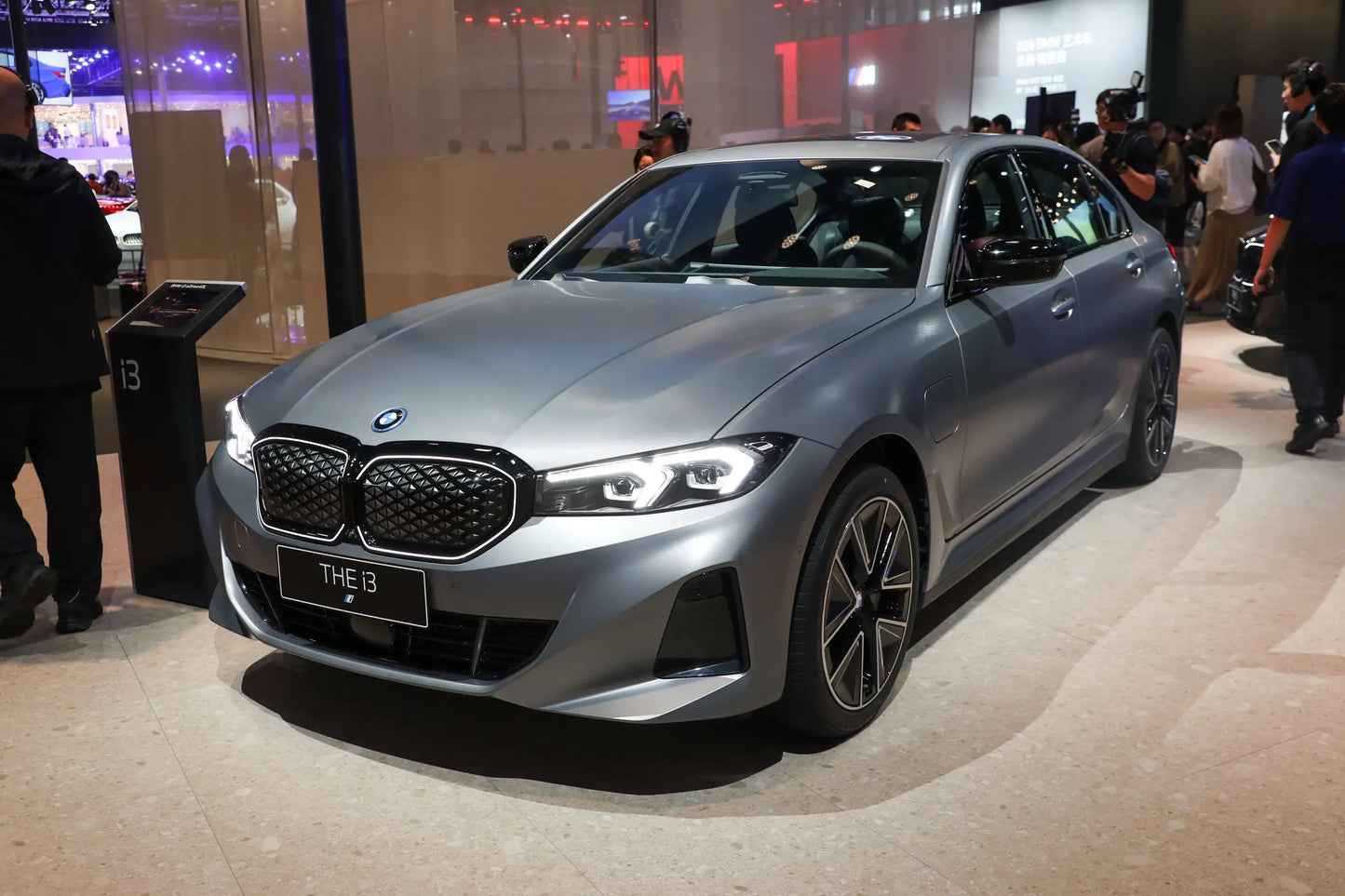
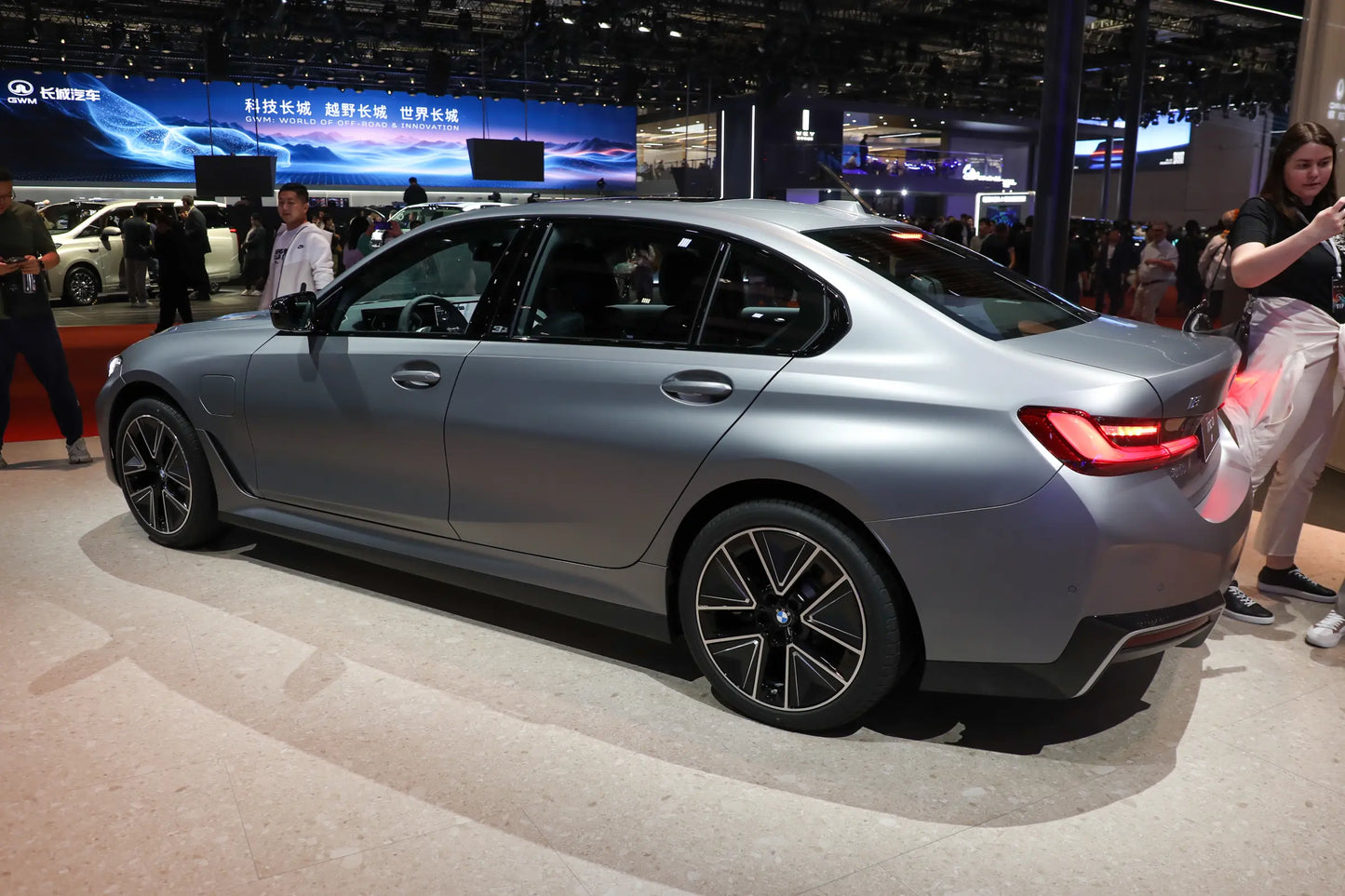
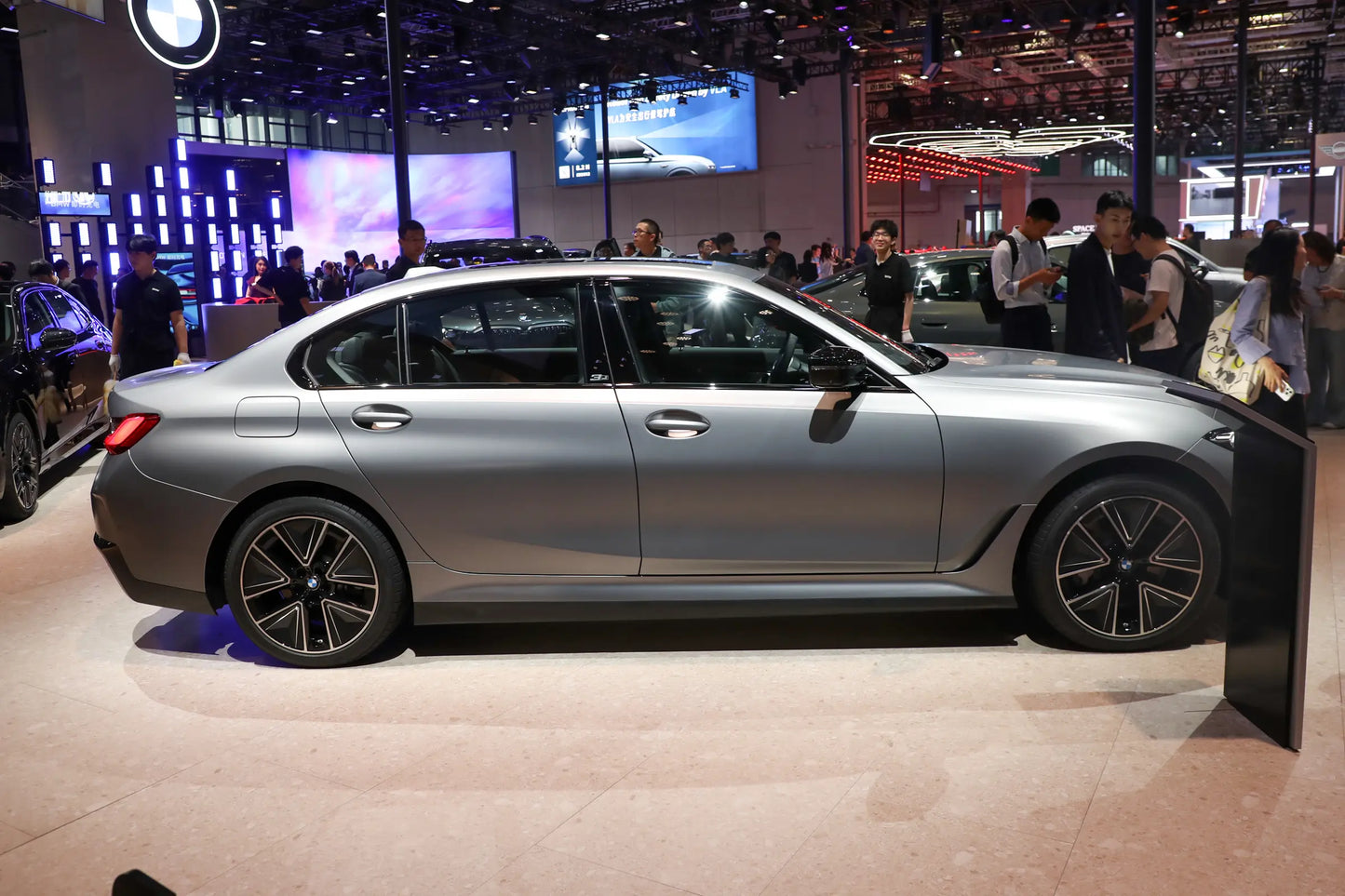
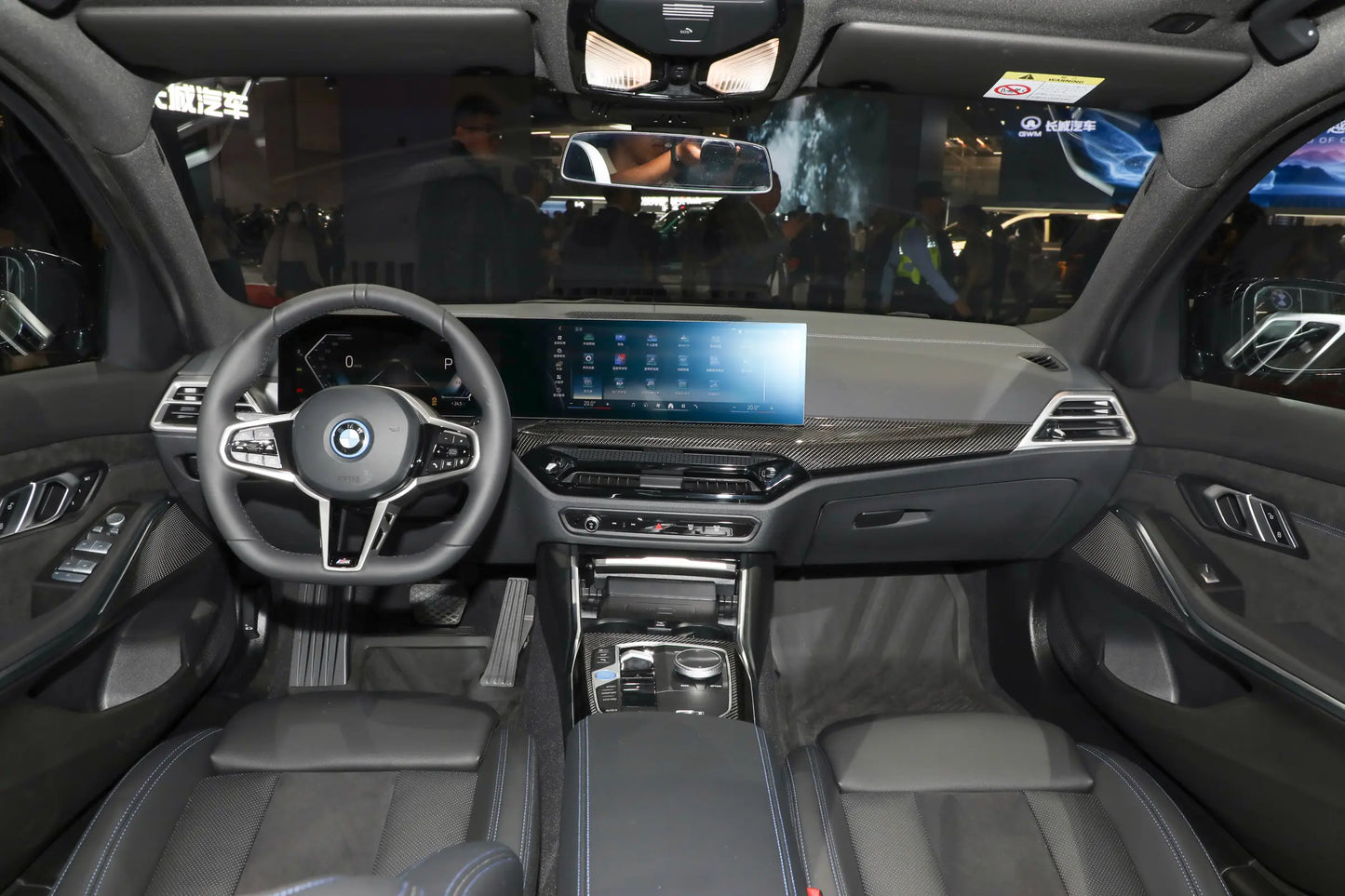
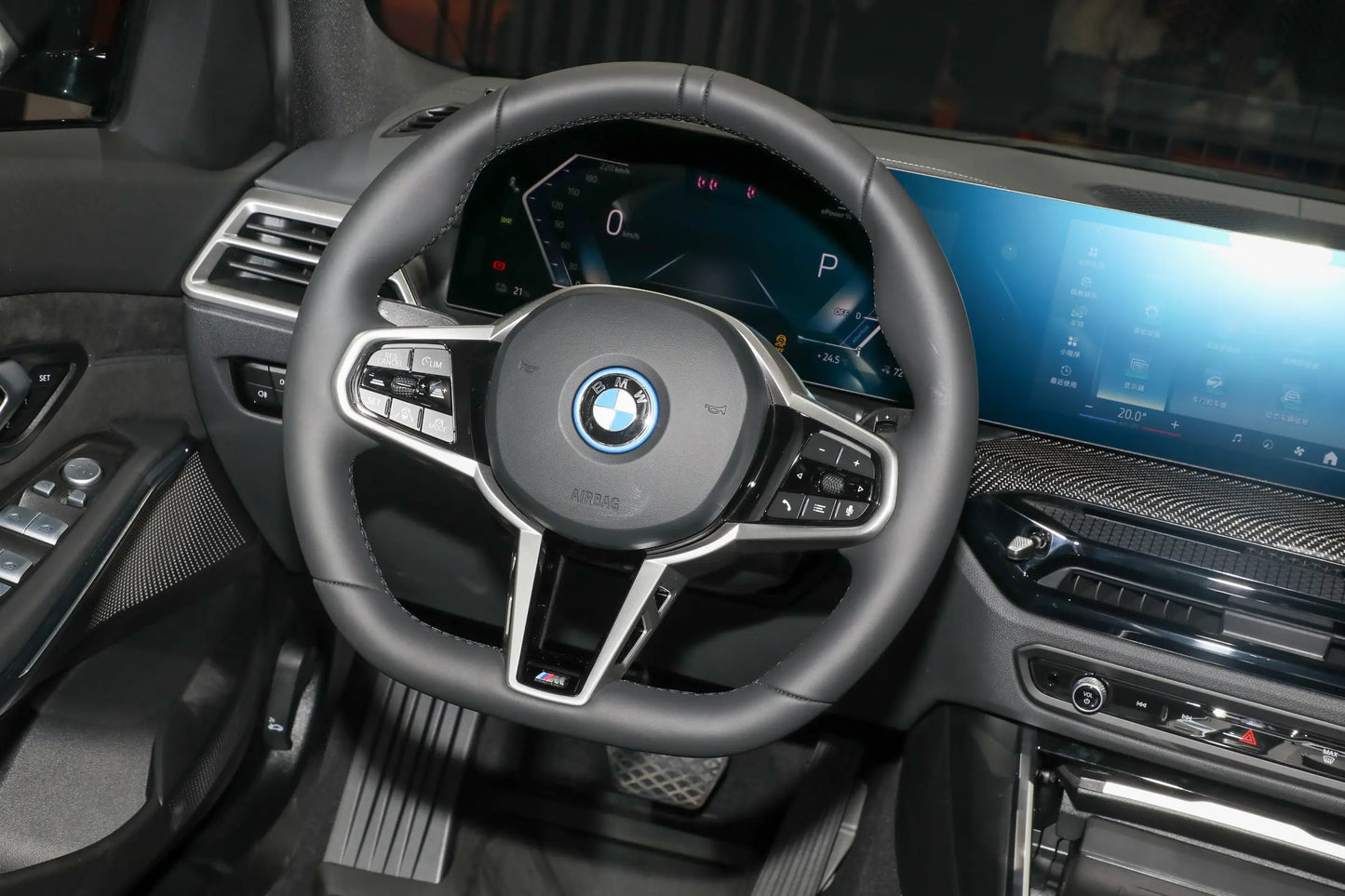
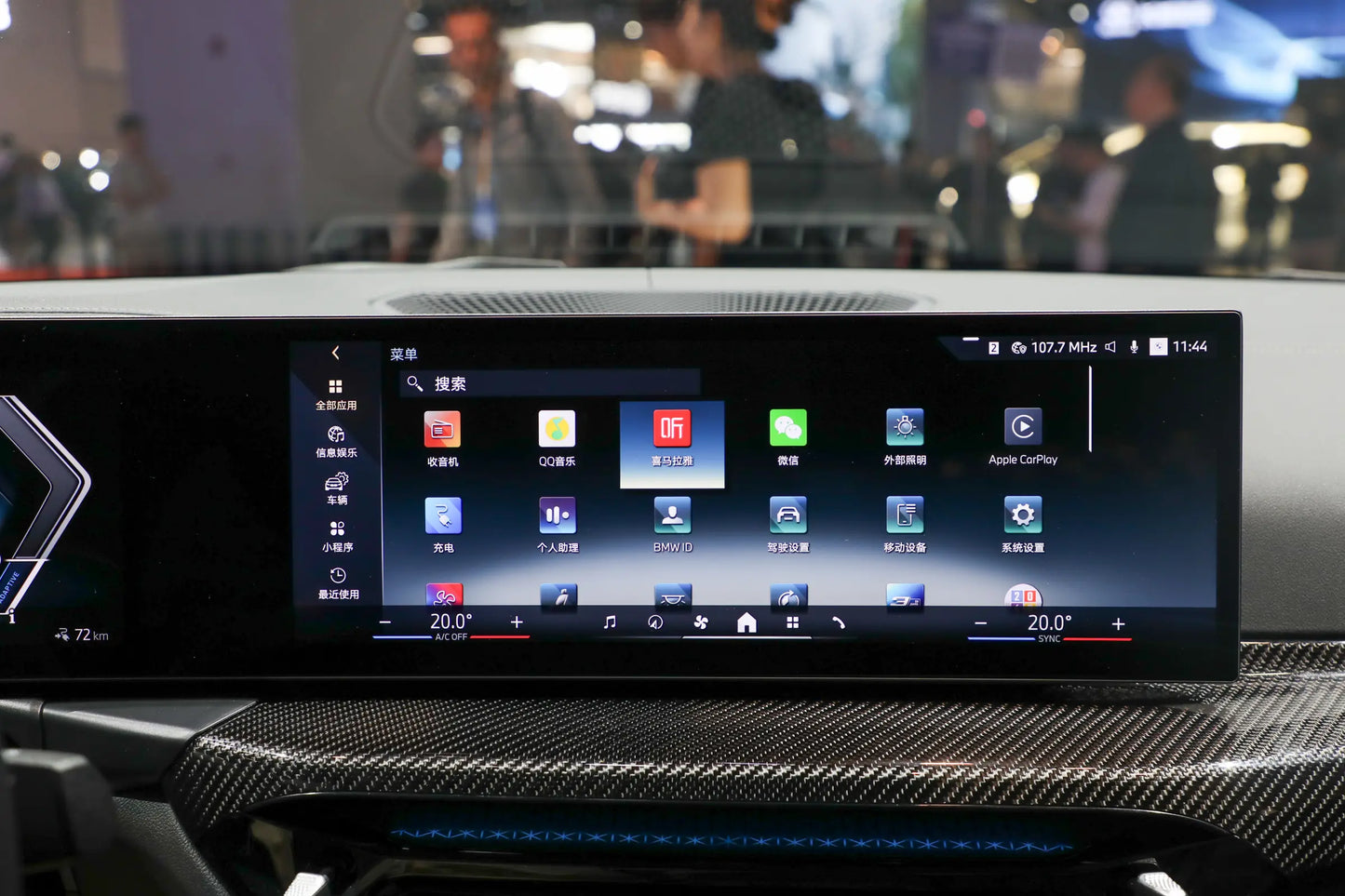
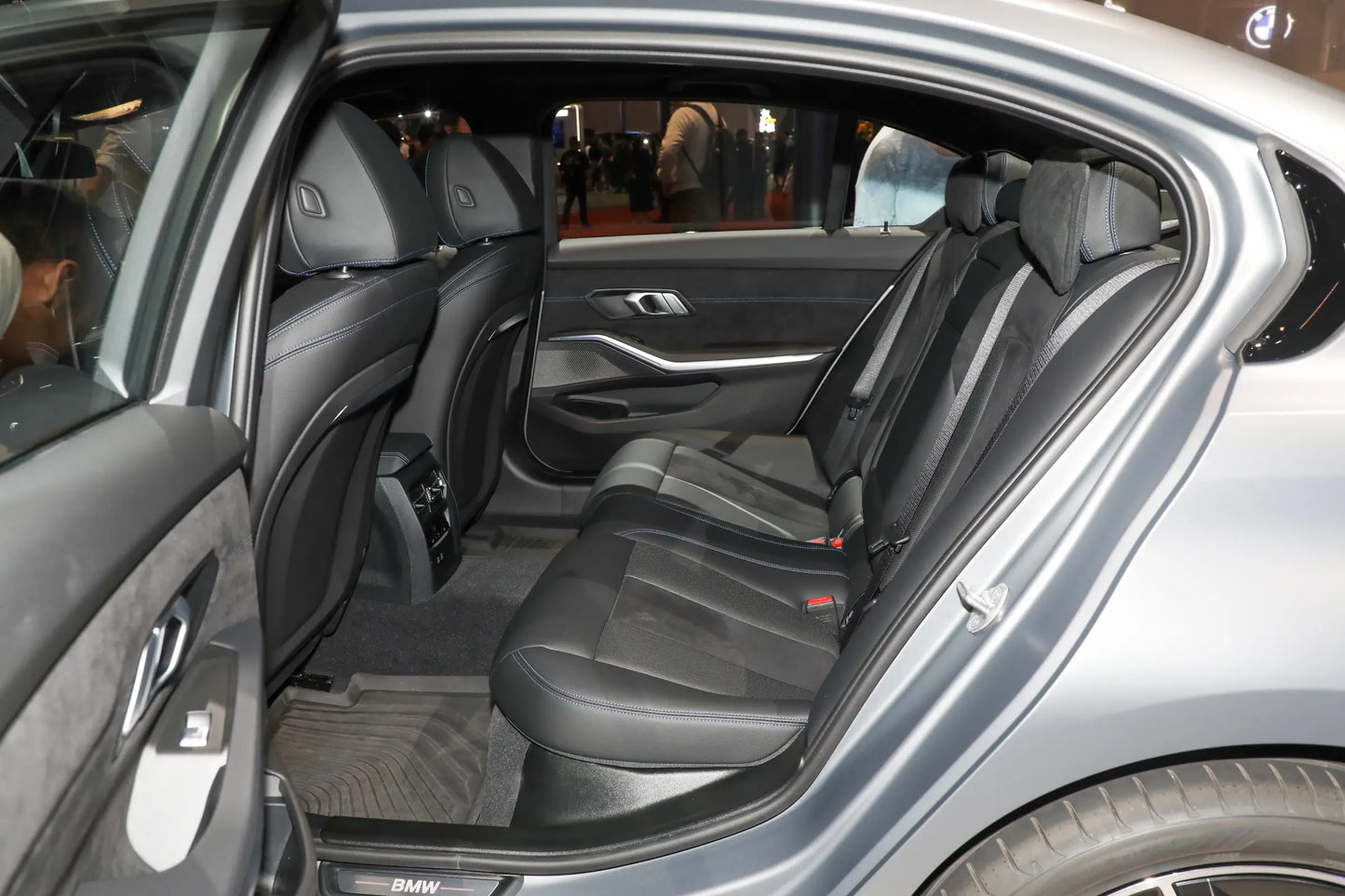
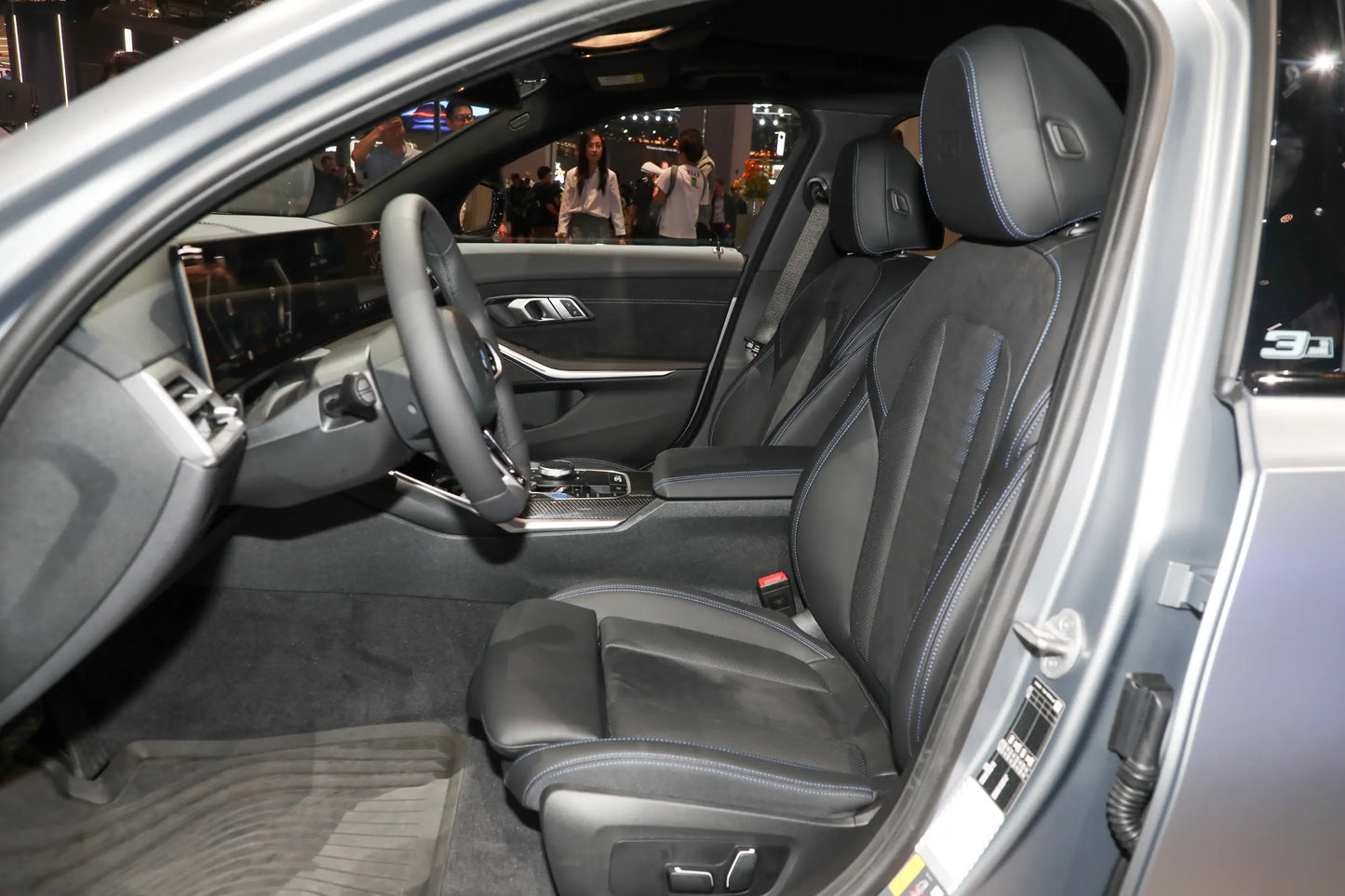

$27,943 USD
-
BrandBMW
-
Vechile ClassSedan
-
Energy TypeBattery EV
-
Pure Electric Range(KM)526
-
Curb Weight (kg)2029
-
Battery Typeternary lithium battery
-
Total Power of Motor (KW)210
-
Maximum Power(KW)210
-
Total Torque of Motor(N・m)400
-
Maximum Torque(N・m)450
-
Length x Width x Height(mm)4872x1846x1481
-
Official 0-100km/h Acceleration Time(s)7.3
-
Power Consumption(kWh/100km)12.4
-
Equivalent Fuel Consumption (Electricity)(L/100km)1935
-
Battery Capacity70.17 (kWh)
-
MaximumSpeed(km/h)170
-
Motor Layoutrear mounted motor
-
Transmissionsingle-speed transmission
-
IDev2509021
Panoramic Interiors
Video Manual
Authentic on-site shots for an immersive vehicle detail experience
Real Customer Reviews
Source: DCAR
Review A
?? I went to the 4S store to test drive the new BMW i3 today. It really drives well, after all, the price is cheaper now. Here are the specific test drive experiences:
1. According to the parameters, the i3 can accelerate from 0 to 100 km/h in 6.8 seconds, which is a good data performance. However, in actual experience, the power expression of the i3 is more like that of a fuel - powered car.
? Compared with the XPeng P7+ I test - drove this morning, which has a lighter and more responsive throttle calibration that makes the car leap forward at the start, the accelerator pedal of the i3 is relatively heavier and feels solid when stepped on. Secondly, from light to heavy on the pedal, the i3's power surges in the second half, that is, after the speed exceeds 60 km/h, the more you step on the pedal, the more power it has. In the first half, the power of the i3 is relatively gentle. Except for a slight leap at the start, it drives no differently from the BMW 3 Series. The whole body can maintain a good coordination with the power, without a strong sense of being pushed back. In terms of household comfort, I think the i3 is better than the XPeng P7+.
2. Since the overall acceleration of the i3 is not the kind of extremely fast calibration, and as an electric vehicle, its overall power output is relatively restrained. So in terms of braking, the calibration of the i3 is not that once you step on the brake, the vehicle will stop quickly. Instead, like downshifting, when you press the brake pedal to different degrees, the i3 will determine the corresponding driving speed according to your footwork. By the time it's not far from the vehicle in front, the speed is only about 10 - 20 mph, and you can simply step on the brake to stop.
Of course, as a rear - wheel - drive vehicle, in the case of sudden emergency braking, the impact on the front wheels doesn't seem to be very large, and the braking reaction of the rear wheels is very timely. So when sitting in the front row, the nodding feeling when braking is significantly less than in the WEY Latte I'm currently driving, and the items in the car don't fall under the seats due to sudden braking.
3. The chassis of the i3 has always had a relatively hard calibration style, but compared with the 3 Series, it has more flexibility and the road feel is not that clear. When passing over a relatively high speed bump, the 3 Series feels like the tires directly hit the speed bump with little cushioning, but it passes over it very neatly. While the i3 doesn't sense the whole speed bump that clearly, and the sound when passing over the bump is more dull. I tried to drive over a manhole cover on the road, and the left - rear wheel of the i3 didn't bounce up and down much. Of course, it's also because the chassis of the i3 is lower. Similarly, when I suddenly turned the steering wheel sharply to avoid an electric bike during the test drive, the tail - swaying in the back row was not obvious. After the left side of the body was pressed down, it quickly filtered out the external force without the uncomfortable side - to - side bouncing.
Disadvantages: The front hood of the i3 is a bit long. During the test drive, I had to adjust the seat higher; otherwise, my view would be narrow and the blind spot would be large.
At the same time, during the test drive, the disadvantage of the i3 is also reflected in turning. Because the steering wheel is relatively large, if you turn it a little more, it feels like the inner wheel diameter is prone to scratching. If you turn the steering wheel a little late, it's easy to encroach on other lanes when making a U - turn.
On the other hand, a relatively good point is that the left and right rear - view mirrors of the i3 are relatively long and thin. When driving, the rear - view mirrors of the i3 can see vehicles coming from farther away, which can better ensure driving safety.
5. As an electric vehicle, although the materials used in the i3 are really ordinary, the workmanship is good and the airtightness is excellent. So after closing the car door, I can hardly hear the outside noise. Of course, when the i3 is driving on the road, especially when the speed exceeds 70 km/h, the wind noise is really quite loud, and the abnormal noise from the left and right doors is also relatively heavy. It's probably because the whole door is relatively thin.
6. Let's talk about the average energy consumption of the i3. I checked the test - drive car, and it consumes 26 kWh per 100 kilometers. It can be said that this energy consumption is really not low. Considering that the test - drive car was driven aggressively, and the temperature has been high these days, I estimate that the daily energy consumption of the BMW i3 should be between 14 - 18 kWh. In winter, the energy consumption is estimated to be between 20 - 25 kWh. Considering that the battery capacity of the i3 is more than 70 kWh, the minimum range on the highway in winter should be around 300 kilometers.
Let's talk about the static test - drive experience, mainly about the disadvantages:
1. The workmanship and materials of the i3's interior are really very ordinary. It can be said that it only looks okay on the surface, but in fact, it's not even as good as the Volkswagen Magotan. For example, the seats of the i3 seem to have leg rests and are made of leather, but actually when you touch the leather of the seats, it's very wrinkled, and the stitching is also uneven. Generally speaking, it's very rough and lacks the refinement of the BMW X3.
2. The lighting of the vanity mirror... It's really a design from more than a decade ago, with yellow tungsten filament lamps, which really look very cheap and old - fashioned.
3. As an electric vehicle, why is the middle floor in the back row so high? Does it still have a transmission shaft in the chassis like a fuel - powered car? It can only be said that the i3 really has a chassis converted from a fuel - powered car, which is really disappointing.
4. The buttons on the center console armrest are all in English. I think BMW has been in the Chinese market for many years. Although many old drivers can understand those English words, it's really unnecessary. Is it really that difficult to change them to Chinese like BYD?
Let me first talk about the advantages: The seat cushions of the i3 are not cut - down in terms of materials. There is very little suspension at the knees. Secondly, the rear - row space of the i3 is really very spacious. I'm 173 cm tall and weigh 68 kg. When sitting in the back row, there is at least about three - fist distance between my knees and the front seat. As a sedan, the headroom in the i3 is relatively average, only about a little more than one - fist distance, just so - so.
Review B
??Those who own a BMW know that BMW electric vehicles are a typical example of converting fuel-powered vehicles to electric ones. Simply put, they use the chassis and platform of fuel-powered vehicles to directly produce electric vehicles. Although there is no drive shaft in the position of the rear - seat drive shaft, the floor still remains raised. When the 3 Series is converted to an electric vehicle, it becomes the i3, and the electric version of the 5 Series is the i5. Except for the grille, logo, and the absence of an exhaust pipe, the appearance size and configuration of the electric vehicle are basically the same as those of the fuel - powered vehicle! There are currently four versions of the i3. Among them, the difference between the most - inquired 35 and 40 Yaoye versions is not significant. The battery capacity of the 35 version is 9 kWh less, and the advertised range is 70 kilometers less (actually only about 40 kilometers less), but the price difference between the two versions is 20,000 yuan. So, the 35L has a higher cost - performance ratio. Currently, if you want any model of the 40L, you have to wait about two months for delivery!
??Test - drive vehicle: 2025 BMW i3 40L Yaoye (Note: the "25 - model" in the text should be the 2025 model).
??Comparison between the 2025 i3 40L and the 2024 model:
1. There are minor adjustments to the interior. The most obvious change is in the adjustment method of the air - conditioning vents, which has changed from a delicate dial to a simple "small stick" design. Although it is easier to operate, it also has an obvious sense of cheapness.
2. On the basis of the original cruise control, the driving assistance system has added a vehicle following function (ACC), which can relieve fatigue during long - distance highway driving or in congested traffic. What's most unexpected is that this car does not have L2 - level driving assistance.
3. The number of driving mode selections has increased from several to 7. There are multiple combinations of power response and energy recovery available, which can adapt to different driving styles and road conditions.
4. The center console "bracket" is still the iconic floating curved dual - screen supported by a rear bracket (12.3 - inch instrument panel + 14.9 - inch center console), with no changes. This bracket is unique to the i3 in the BMW family. I think it's a bit of an over - addition, as other models don't have it.
5. Voice commands can now be recognized by zones. Although the recognition and execution are a bit slow, the misrecognition rate is very low. In addition to the door - opening prompt, there is also a pattern indicating the number of people seated, which is a bit novel.
??When you get into the cockpit and press the start button (BMW electric vehicles still retain this sense of ceremony), compared with the previous test - drive of the X3, the absence of the engine roar makes it extremely quiet. Previously, when I was driving a BMW X3, my classmate said that BMW cars have excellent steering accuracy. During this test - drive, the steering wheel has a great feel and extremely high steering precision, and the front of the car responds very sensitively. When test - driving on a village road and taking a turn without slowing down, there is no obvious roll. You can feel the sports gene foundation of fuel - powered vehicles in the handling of the BMW i3. The 40L has a quite sufficient power reserve. When you step on the accelerator, the response is rapid and linear, without the sudden, out - of - control "jerk" feeling of some electric vehicles. Whether starting on a village road or overtaking on a national road, the vehicle's power is always at your disposal, giving you a sense of confidence. The BMW i3 uses an excited synchronous motor (commonly known as a carbon - brush motor). Its advantage is that the power attenuation is not obvious during high - speed driving, which helps to increase the high - speed driving range; the disadvantage is that it requires regular maintenance (cleaning of carbon powder).
??The chassis and air suspension are the trump cards of the BMW i3. The rear axle is standard - equipped with an air suspension. When test - driving on a cement and gravel road in the village, you can hardly feel the minor bumps, which also greatly improves the comfort of the rear - seat passengers. When the vehicle passes over a speed bump at the village exit at 20 miles per hour, it is relatively smooth, and there is not much obvious shaking inside the car. The combination of rear - wheel drive and rear air suspension is relatively rare, so the combination of power and comfort is also a selling point of the i3, but currently, not many people understand it, except for old BMW owners.
??The automatic parking function of the BMW i3 has improved. After I drove back into the 4S store yard, the steering actions of the BMW i3 during the process of finding a parking space, recognition, and starting to park were indeed smoother compared to the previous - generation system. The image has also changed from a radar circle to a line - distance display, which is clearer. However, after the automatic parking was completed, the car was a little crooked. I took over and made a slight adjustment to make it park perfectly. So, this function can be used as an assistance but cannot be completely relied on. Otherwise, the car might be parked in the space, but the driver may not be able to open the door to get out.
??The interior space is definitely sufficient. When a 175 - centimeter - tall clerk adjusts the driver's seat, a person of the same height sitting in the back row still has about two - fist space for the knees and about one - palm space for the head. Even in the middle and rear rows, there is nearly one - palm of headroom. However, the raised part under the feet is uncomfortable. I really don't know if the BMW manufacturer keeps this useless feature to increase brand recognition or for other reasons. If the middle row could be completely flat, the comfort would be further improved. Overall, the interior space is very spacious! Currently, only the top - of - the - line model has a Harman audio system, and the rest are high - fidelity audio systems, which may be related to cost control. You also have to pay extra for the branded "mini - Harman"! The trunk is relatively flat. It can obviously hold four 20 - inch suitcases. There are fixed grooves on both sides of the trunk instead of mesh pockets, so bottles and sundries won't roll around during driving.
Review C
As an old owner of the 2022 i3 35L, I traded it in for the top - of - the - line new 40 model this time.
The 2025 sporty Night Shadow version of the BMW i3 has significantly improved compared to the 2022 35L. In terms of appearance: The illuminated kidney grille paired with the Brooklyn Grey color scheme is eye - catching, and it gets a 4.5 - point score for its good looks. The illuminated kidney grille is really cool. The grille of the 2022 model always seemed a bit off.
Interior: It has a traditional sense of luxury but lacks intelligent elements, getting a 3 - point score. Space: It performs excellently, standing out among its peers. Moreover, the seats are very comfortable and I'm satisfied with the angle, so it gets a full score.
The assisted driving function, though not flashy, is stable and also gets a 4.5 - point score.
The intelligent cockpit has made obvious progress compared to previous models. It has a fast voice response, supports wake - free operation, and has a rich set of control functions. However, there is still a gap compared to new - force brands, so it gets a 4 - point score. The 17 - speaker Harman Kardon system adds points. If there were no Harman Kardon, it might only get a 3 - point score, haha.
The range and energy consumption performance is amazing, with a very high achievement rate, getting a 5 - star review. I drove the old model for 60,000 kilometers before switching to the new one. Generally speaking, the new model has been optimized and upgraded in many aspects, bringing me a better driving and riding experience. Although there is room for improvement in intelligent details, its advantages are obvious.

Who‘s ZEEX AUTO?
We have been deeply rooted in the Chinese automotive market for many years. We can help you find cheap cars (both new and used cars), and possess comprehensive compliance capabilities for automobile exports. If you wish to import a Chinese car, please feel free to contact us.










